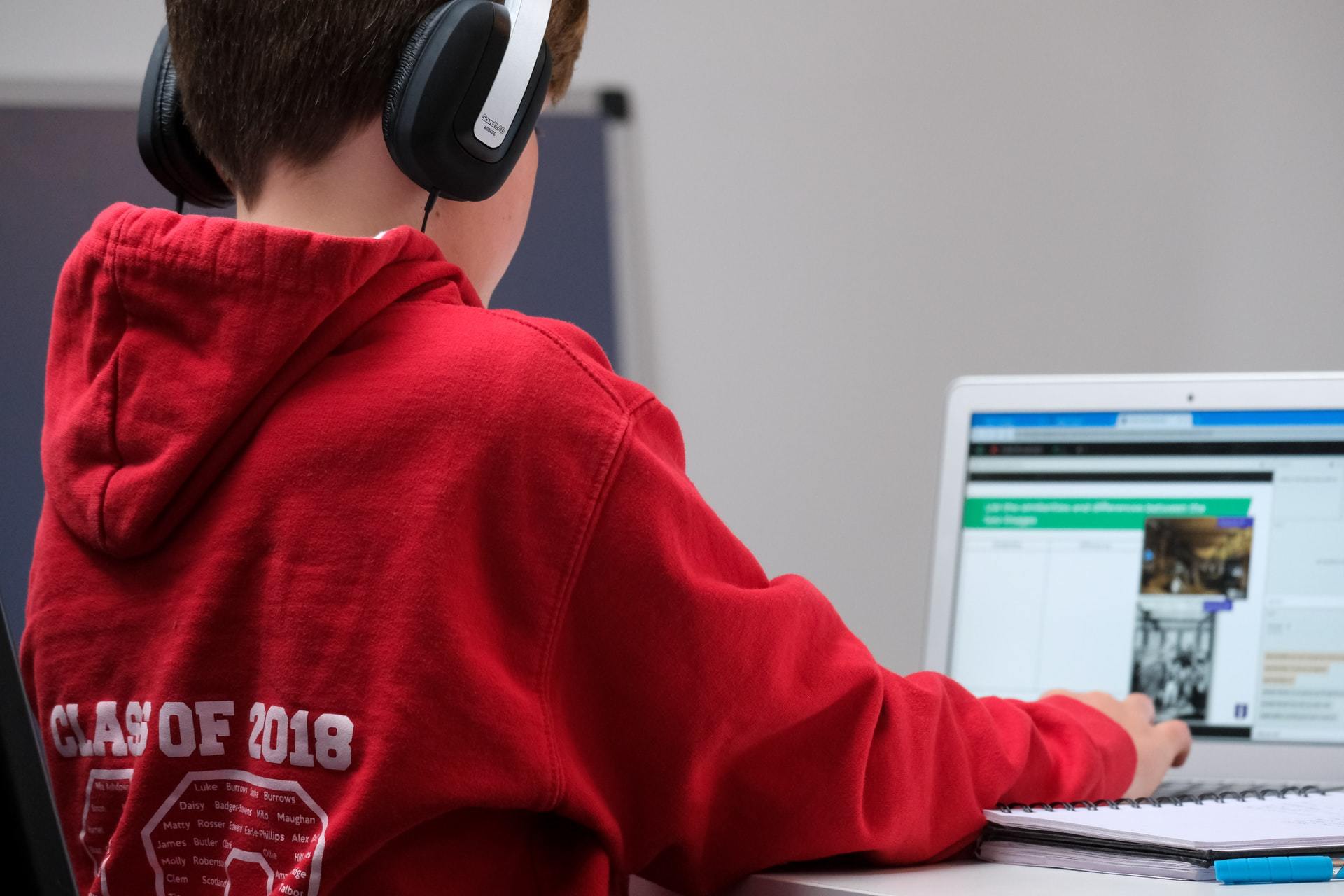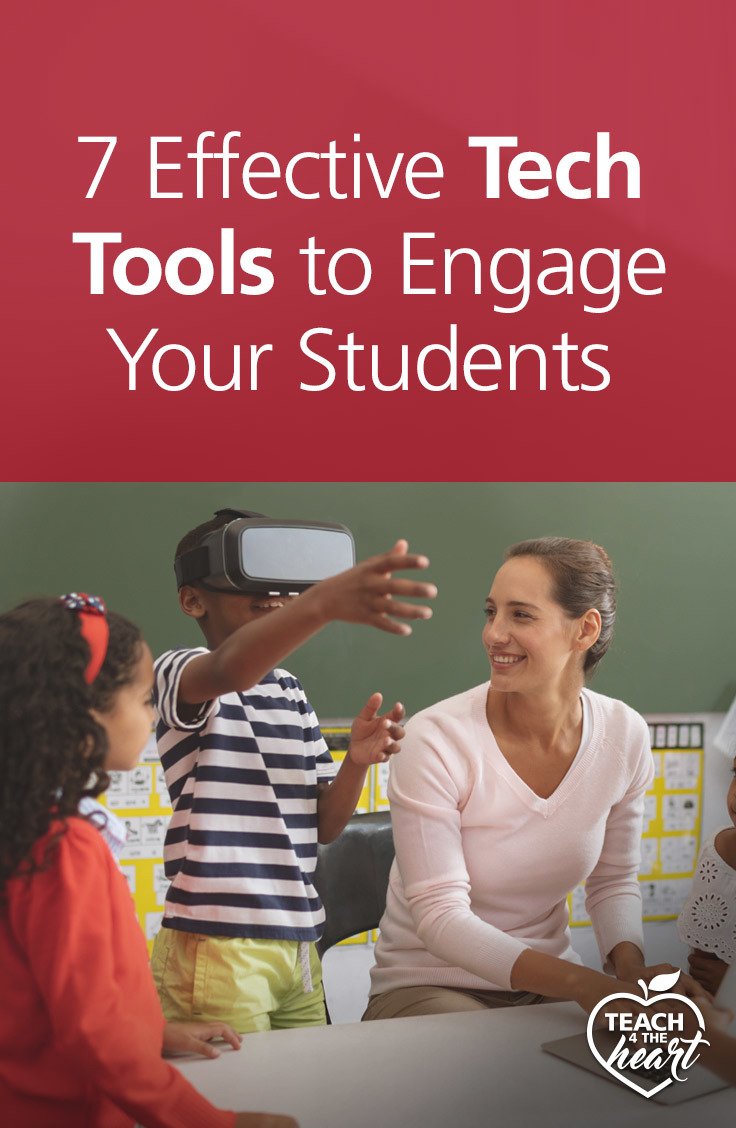
Apart from preparing classes, evaluating homework, and planning the course, teachers have to face another challenge – student engagement. It can be really difficult to interest students and try to bypass distractions like smartphones and tablets. However, modern students grew in a digital era, and instead of considering technology as a distraction, we should make it one of our daily teaching strategies. In the article below, our guest author is going to discuss what he thinks are the best EdTech tools to interest students, motivate them to collaborate, and deepen their knowledge in a fun manner.

1. Augmented reality
Augmented reality (AR) is a technology that overlays pictures, videos, and sounds in the real world. It allows blending virtual reality with our daily lives and creating truly unforgettable experiences. If you have ever played Pokémon Go, you know what we mean.
At the moment, there are lots of AR apps for teaching that your students will surely appreciate. For example, Complete Anatomy, Adobe Aero, AR Pianist, 3D Brush, Math Ninja, and Sky Guide. Augmented reality is one of the most effective student engagement strategies, which helps to escape boredom and get familiar with the latest technologies.
2. video games
Video games are not the most favorite activity among teachers. However, they can be a great addition to traditional classes and engage even the most restless students. Especially now, when distance learning is in full bloom. Let us introduce you to some of the most popular educational video games:
- Where on Google Earth is Carmen Sandiego? teaches capitals, geography, and historical facts.
- Portal Series boosts problem-solving and spatial skills; teaches science and math. Note: Different games in the series have different ESBR ratings.
- The Little Big Planet Series helps to improve logic and orientation skills.
- The Oregon Trail tells about various historical events.
- National Geographic Challenge covers lots of topics, mainly geography and history.
- Nancy Drew Interactive Mysteries introduces students to different cultures, traditions, and languages.
- Wordscapes improves vocabulary.
3. Online sources of information
To make the lessons more interactive, many teachers show movies and TV programs in the class. If you are one of them, but have trouble finding content, use the sources below:
- YouTube consists of millions of tutorials, guidelines, and educational videos that can bring value to the class. However, YouTube is an EdTech tool that should be used only under your guidance and control.
- Google Arts and Expeditions helps you attend hundreds of landmarks and museums across the world without leaving the classroom.
- TED-Ed with lots of inspirational videos and discussions on the latest technologies and the ways children can change the world.
4. photo and video editing
Visuals are often the key to success. They allow students to master the subject more quickly, keep information on the computer, and make for engaging presentations. To achieve such results, students need video and photo editing instruments. For example, one of Movavi’s programs allows screen captures and video edits using a variety of templates and graphical elements. Their screen recording tool can also export files to all the major formats. Another program to consider is Pixlr which allows you to edit photos and create outstanding images straight from your browser absolutely for free.

5. data Analysis and Communication
In 2020, we faced blended learning, which became a real challenge for teachers, children, and parents. It made the process of collecting data and communication rather challenging. But fortunately, we have the programs below:
- Clickers allow teachers to evaluate whether the students understand the subject in real-time. Teachers project the question on the screen, and students answer with remotes or mobile devices.
- Trello helps users create boards with assignments, schedule tasks, communicate when working on a shared project, and get timely feedback from teachers.
- Venngage offers a huge number of features, from creating infographics to discussing questions in real-time.
6. A Better Understanding of complex subjects
Innovating technologies allow mastering even the most complex concepts and topics possible thanks to convenience and data clarity, especially if most of your students prefer a visual learning style and don’t mind going beyond a regular curriculum. Here are a few instruments that can help:
- Evo Classroom Kit is designed for 4th through 8th grade students who love coding. The Lesson Library includes 100 interesting and easy-to-master STEAM classes even if your students have never coded before.
- Prodigy is considered the leading math app for children. It can be used both in the class and at home and gives teachers an opportunity to evaluate progress in real-time.
- Tynker has 3,700+ computer science lessons for any age and background. If you want to add the Hour of Code to the curriculum, Tynker will surely be a great option.
7. Interactive lessons
With the recent switch to online learning, presentations and Zoom classes have become a regular instrument in the arsenal of millions of teachers across the world. We have listed the three most popular and convenient programs that make classes much simpler and engaging:
- Nearpod, with its virtual reality headset, allows discovering topics with a maximum immersion into the process.
- Pear Deck has an Ozobot Certified Educators stamp of approval and lets students participate in the lesson even if they are far away. It offers active learning, formative evaluation, and other effective instruments.
- Buncee is a multimedia display tool that allows you to create presentations using over 8,000 graphic templates and sounds.
Conclusion
There are lots of different teaching styles, but regardless of the one you choose, it is important to keep up with the times and use modern technology to engage the students. Such programs like Big Bang AR, Final Cut Pro, and others discussed above will make the educational process convenient, immersive, and rewarding.
Image 2: Photo by ThisisEngineering RAEng on Unsplash
Image 3: Photo by Compare Fibre on Unsplash
*This is a sponsored guest post by Daniel Davis. Thank you for sharing your wisdom with our community, Daniel!*
NEED HELP REDUCING DISRUPTIONS?
It's almost impossible to get these amazing tech options to work for your small group and station work when there's chaos in your classroom. Get help in our FREE training: How to Reduce Disruptions without Yelling, Begging, or Bribing.
About the author: Daniel Davis
I am a digital marketer with more than 10 years of experience. I am a contributor to Content Marketing Institute and regularly quoted as an expert in large media outlets.
My job is to make your business known all over the Internet.
spread the word!
Did you find this post helpful? Clue in your fellow teachers by sharing the post directly (just copy the URL) or by clicking one of the buttons to automatically share on social media.
Pin it for later ⤵

This article may contain affiliate links. This means that if you purchase a resource after clicking the link, Teach 4 the Heart may receive a small commission at no extra cost to you. Thanks for helping support Teach 4 the Heart in this way.

